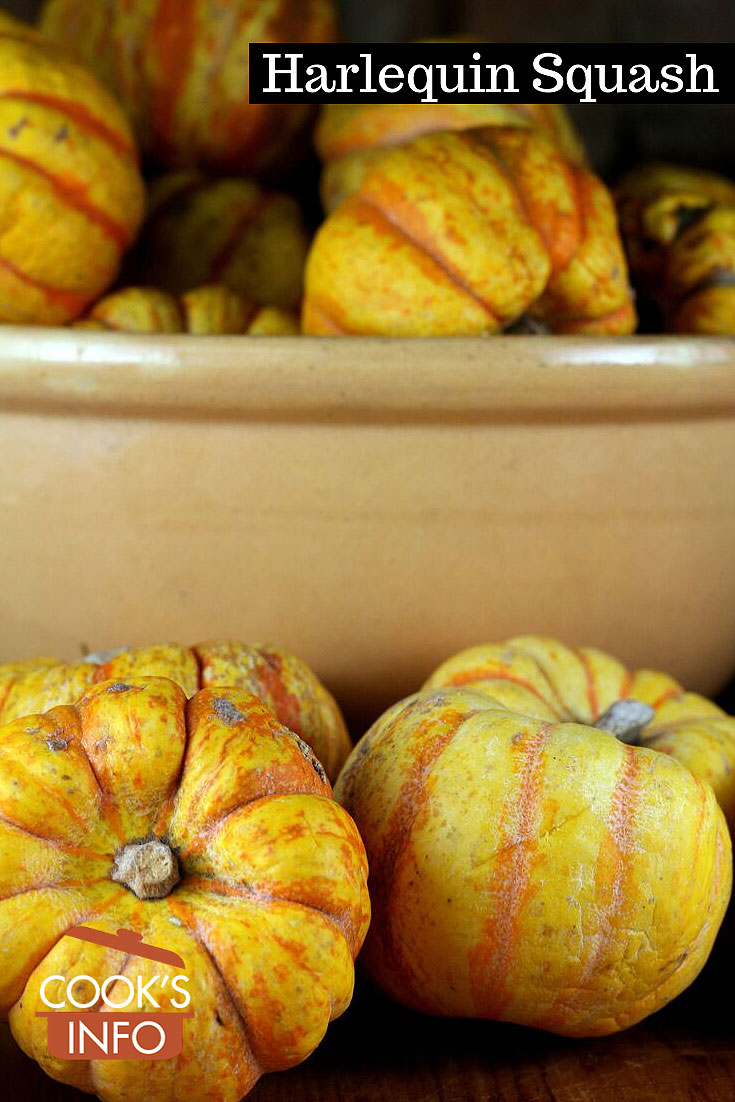
Harlequin Squash. © Denzil Green / 2016
Harlequin Squash is an acorn-type squash winter squash.
It is small, with a soft rind with yellow, orange and white splodges, with dark green splashes occasionally running up it. Many buy it because it is so pretty.
It will grow to be 10 to 12 cm (4 to 5 inches) wide, and weigh a maximum of 700 g to 1 kg (1½ to 2 pounds), with an average weight of about 500 g (1 pound) when fully grown.
Inside, it has a very large cavity packed full with seeds and fibre, which is where a great deal of the weight will lay.
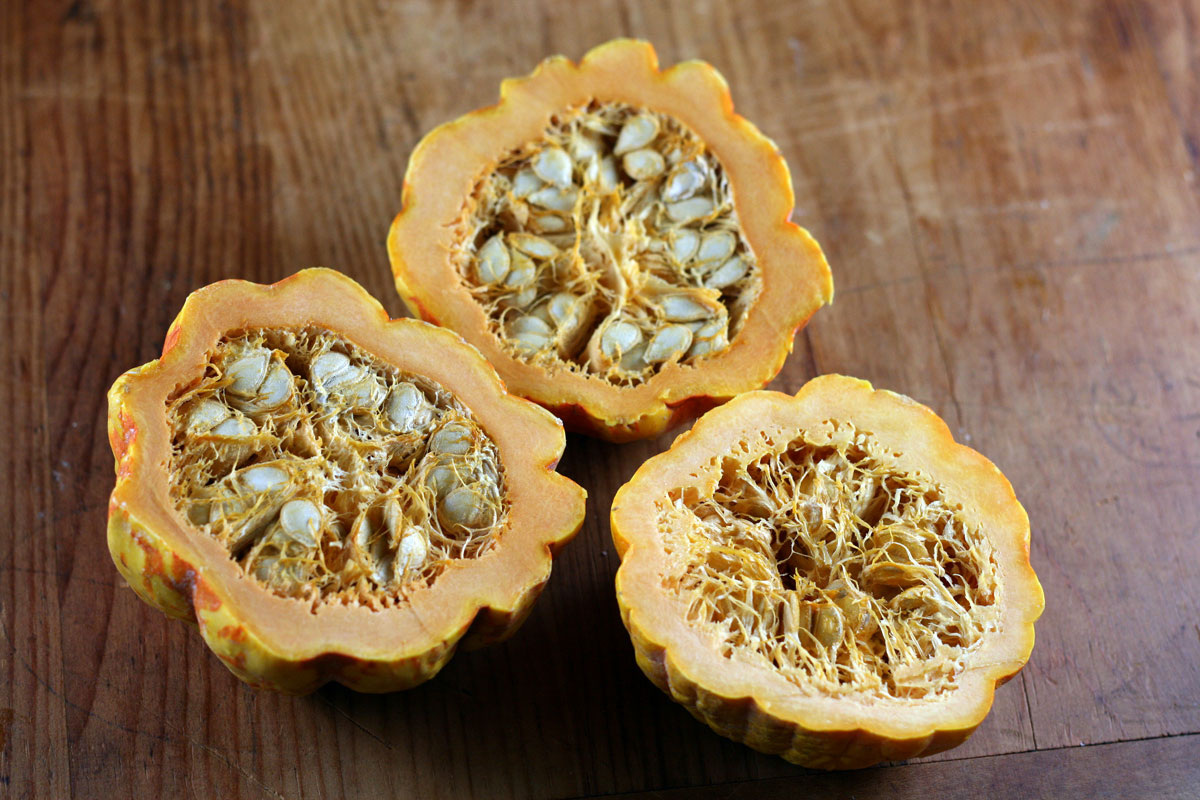
Harlequin squash cross-section. © Denzil Green / 2016
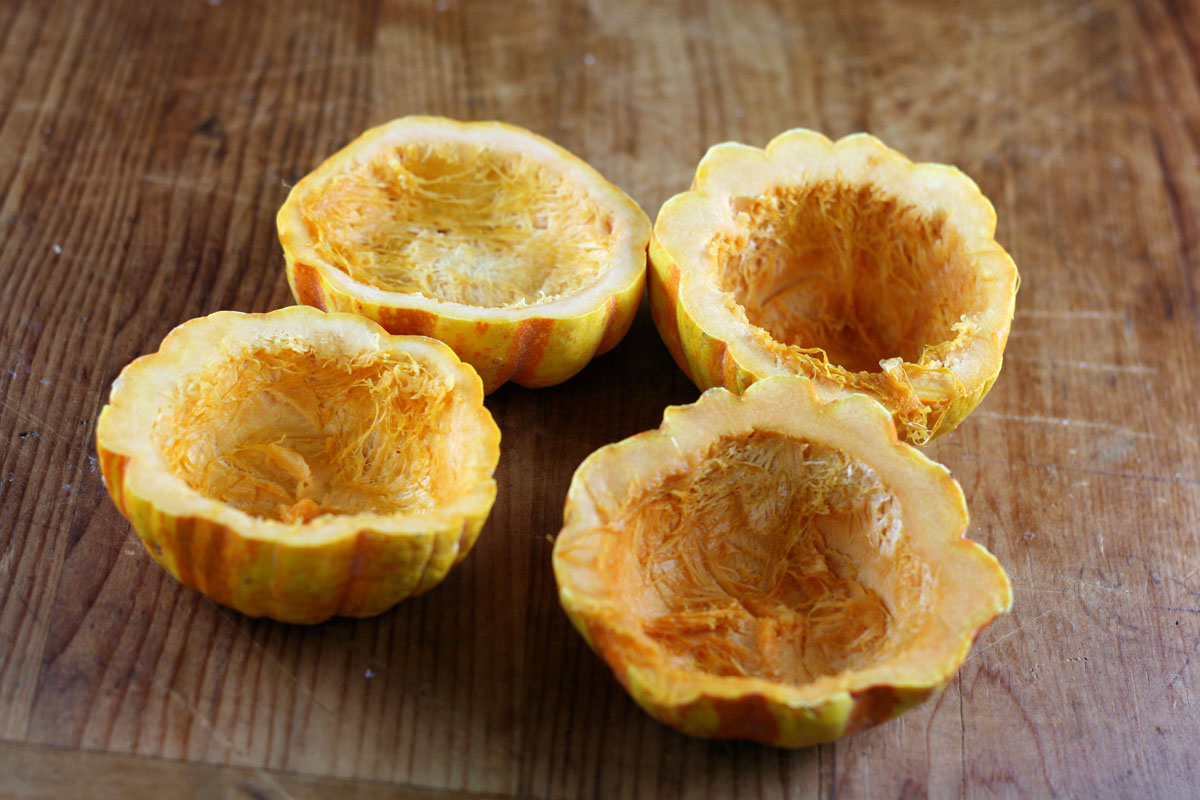
Harlequin squash cleaned. © Denzil Green / 2016
The orangey-yellowish flesh walls are thin, dense and stringy but with good flavour.
It actually doesn’t offer a lot of squash to eat once cleaned.
You may get about five to six forkfuls of squash to eat from one. You have to scrape at the flesh with the tines of your fork to get it off.
As there really is not a lot actually to eat, it’s perhaps best to consider these squashes as shells to be stuffed with a filling such as wild rice and mushroom, etc.
F1 hybrid bush-type plant.
100 days from seed.
This is not the same as Carnival squash in the UK, as some have thought. That cultivar also named Harlequin is predominantly cream and green coloured.
Cooking Tips
Allow 1 to 2 per person.
To cook on its own: wash, cut in half horizontally. Clean out and discard fibre and seed in the cavity. Spray with cooking spray (or brush with oil or melted butter.) Sprinkle with seasonings such as salt, pepper, garlic powder, herbs, etc. Cover with foil and bake at 220 C (425 F) for 30 minutes or until tender. (This is a dense, firm squash so it won’t go as soft as one like butternut will.)
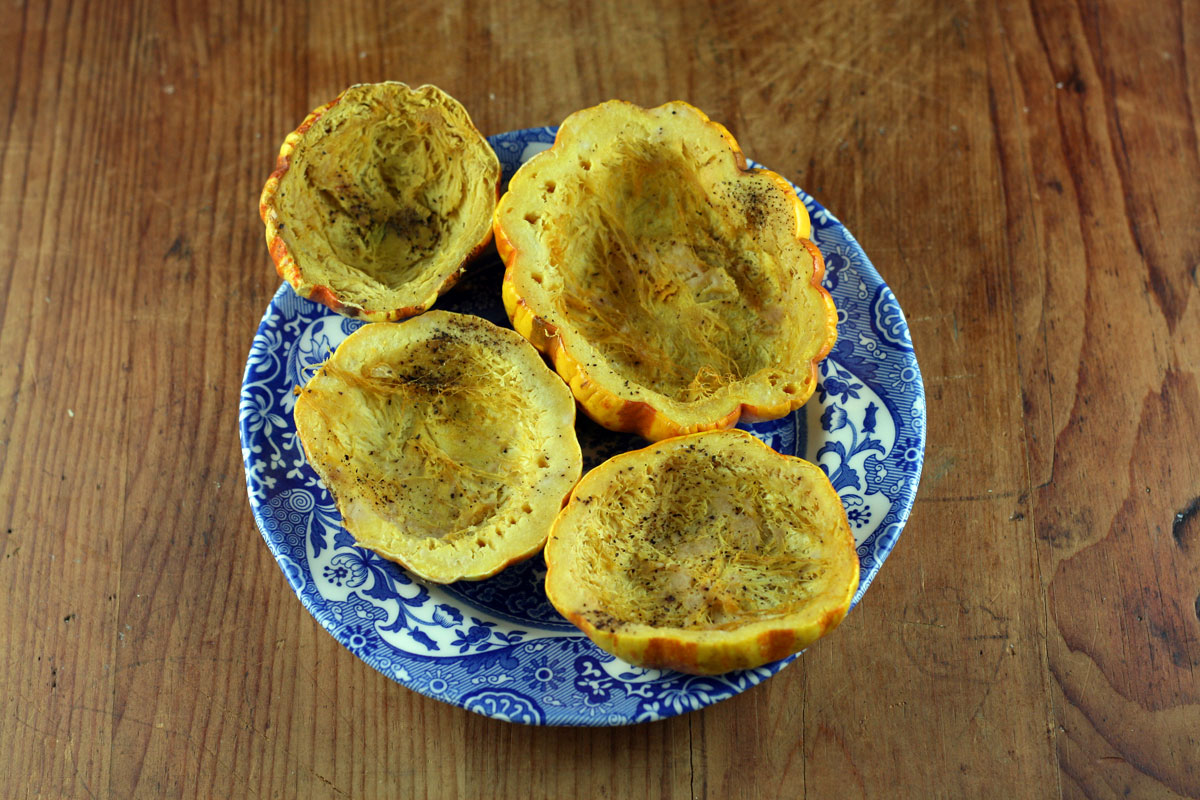
Harlequin squash baked. © Denzil Green / 2016
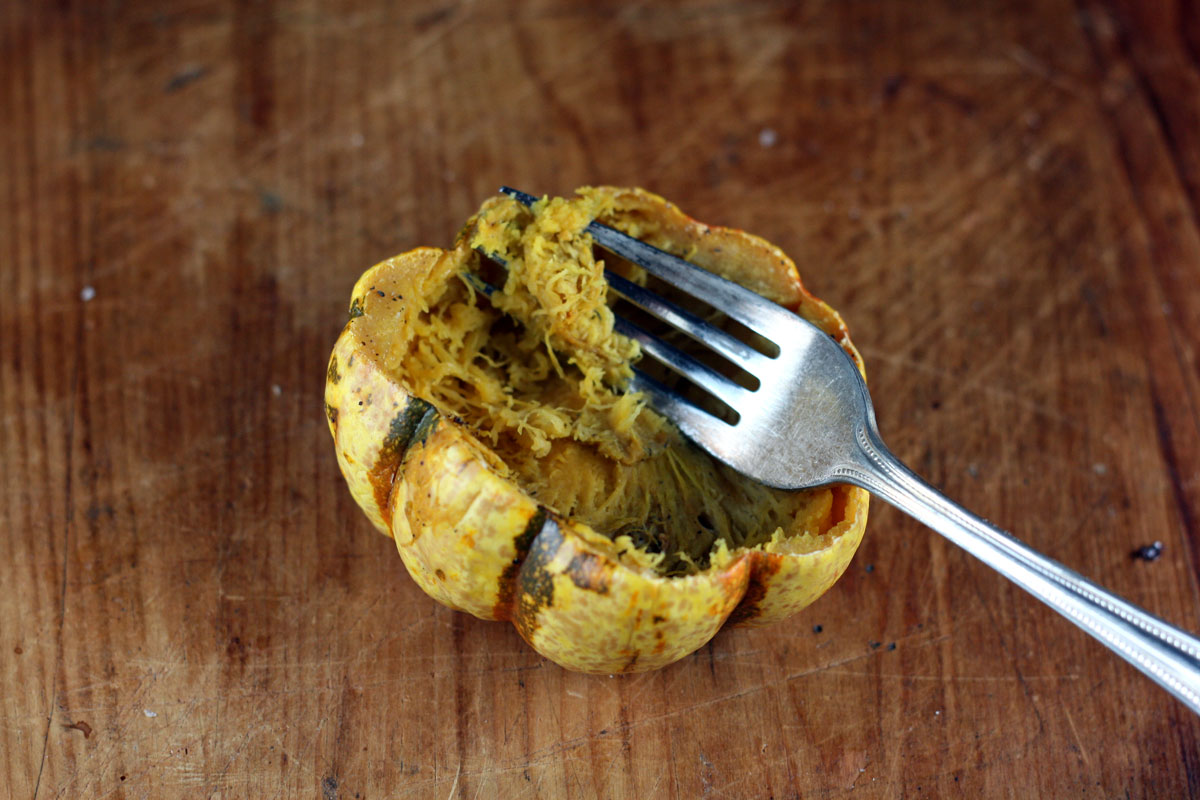
Showing texture of harlequin squash flesh. © Denzil Green / 2016
History Notes
Developed by Rupp in conjunction with Cornell University, Itaha New York.
One of the parents was Cornell Bush Delicata Squash.
Released 2001.

